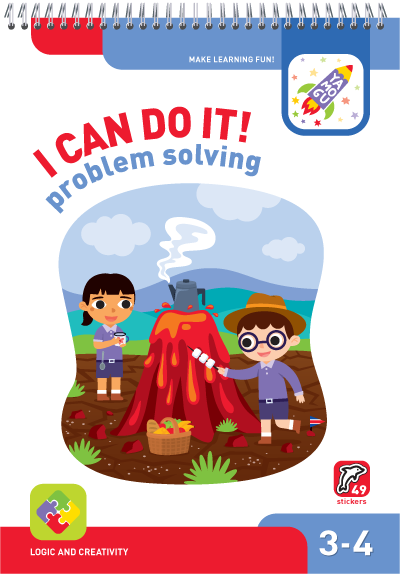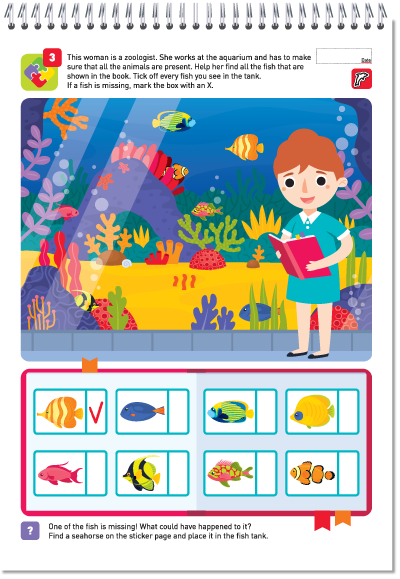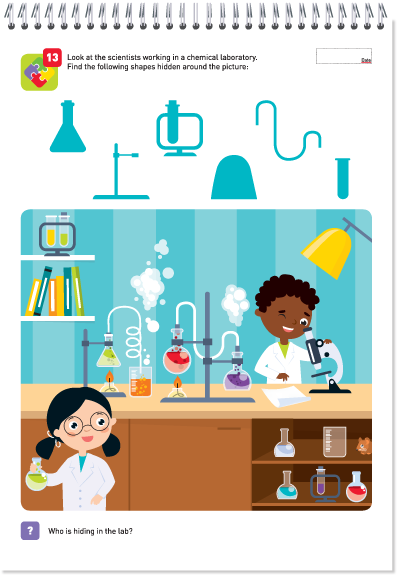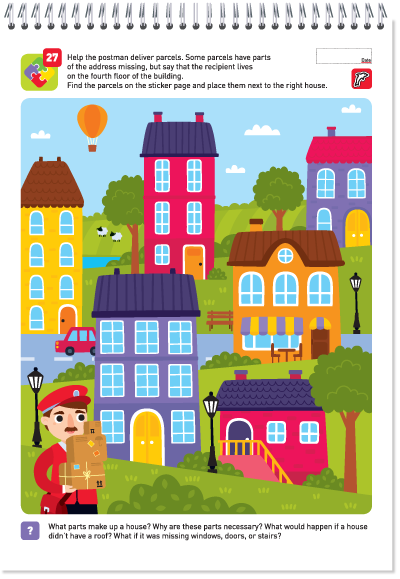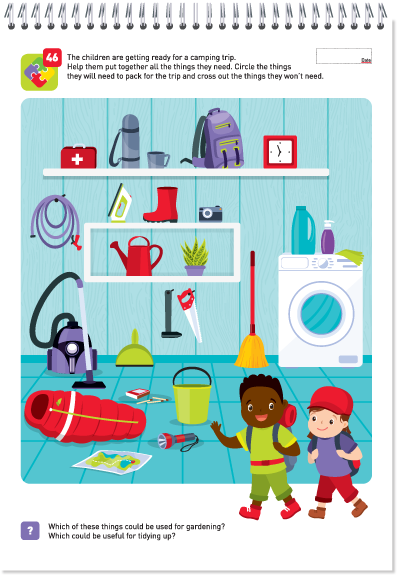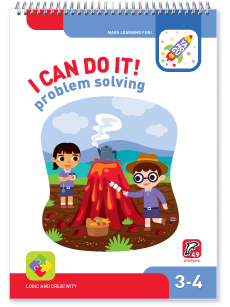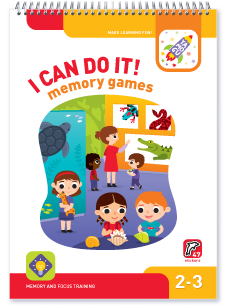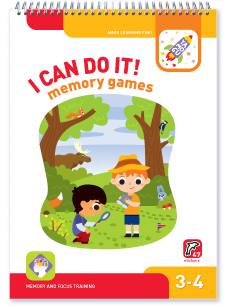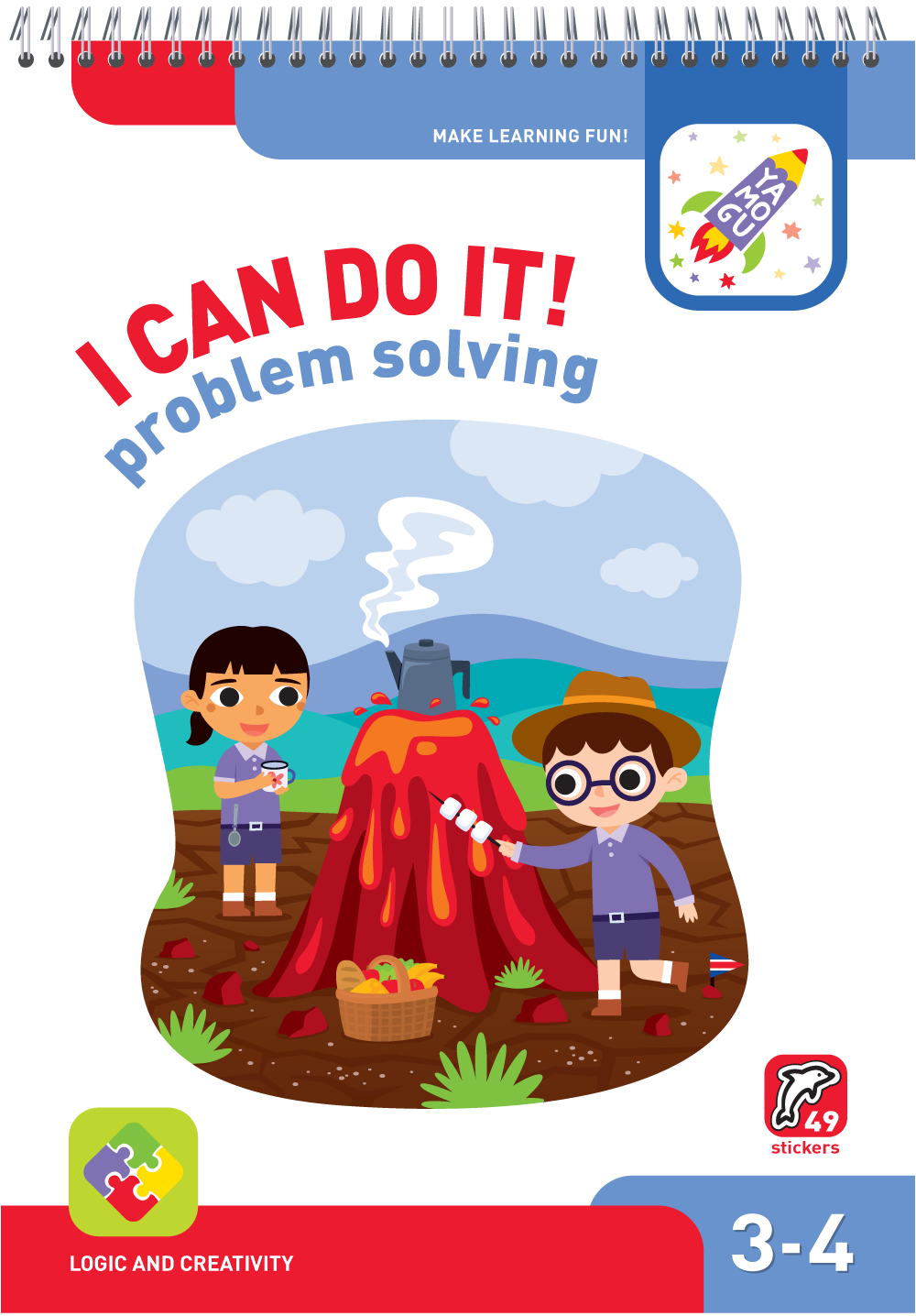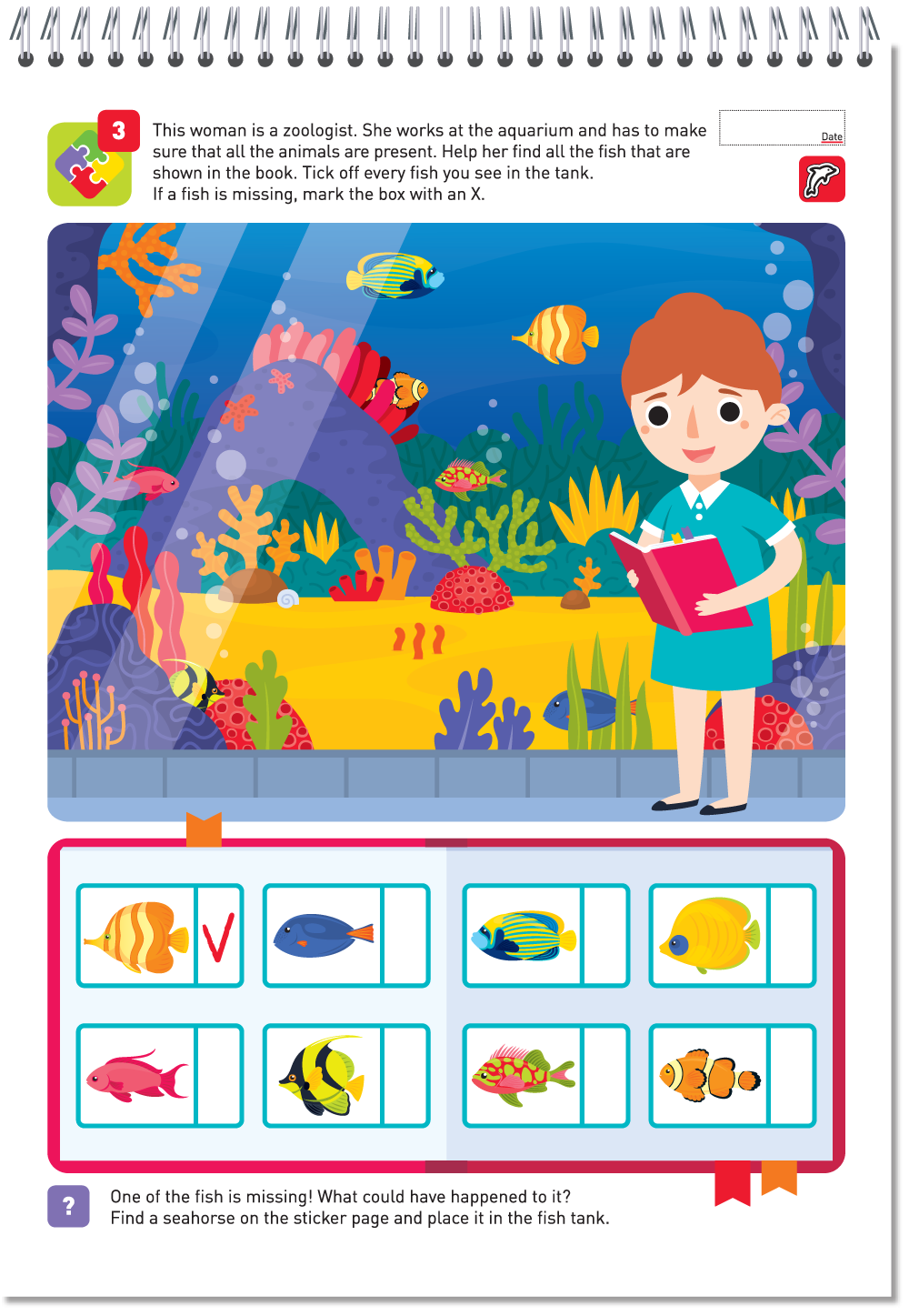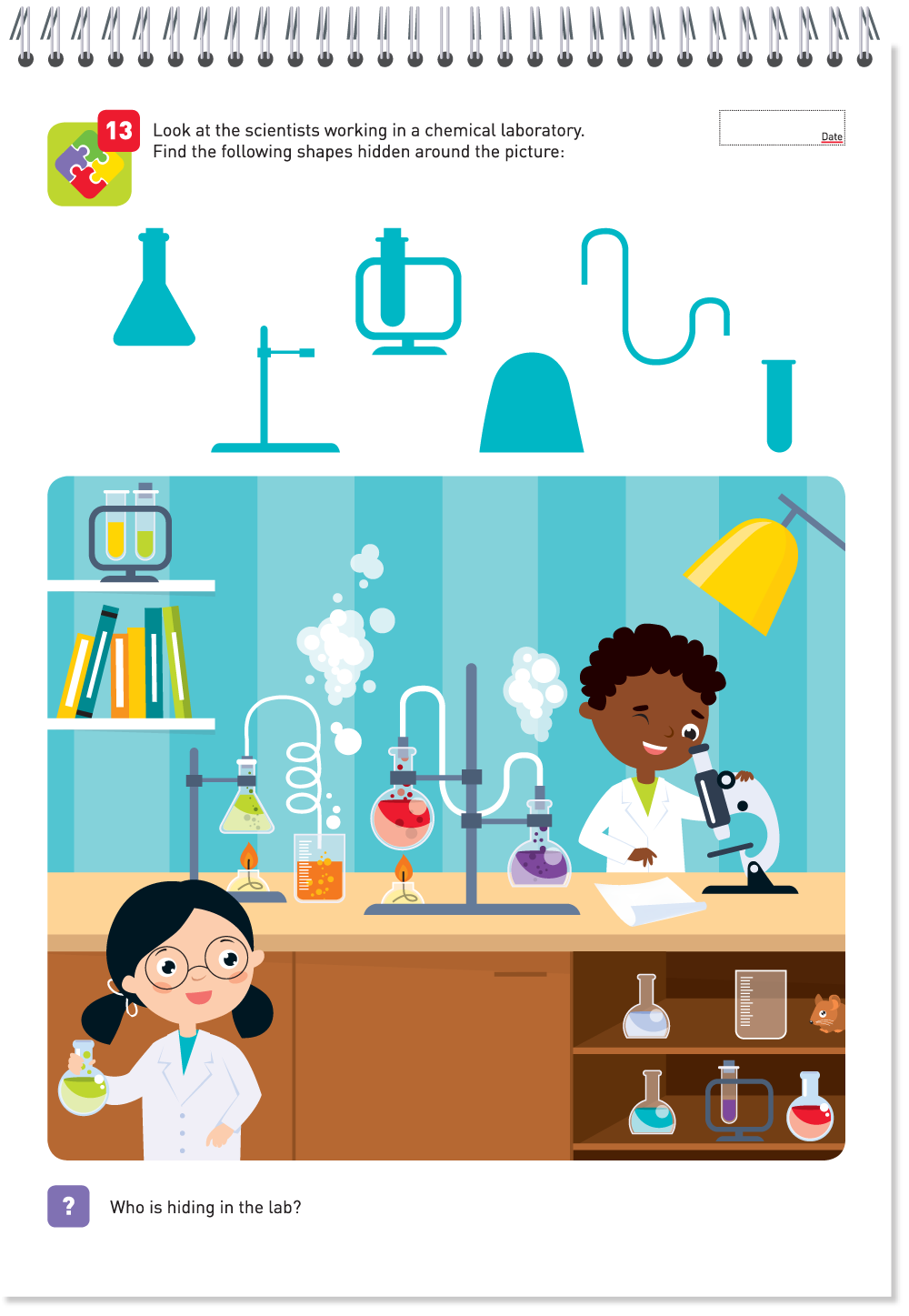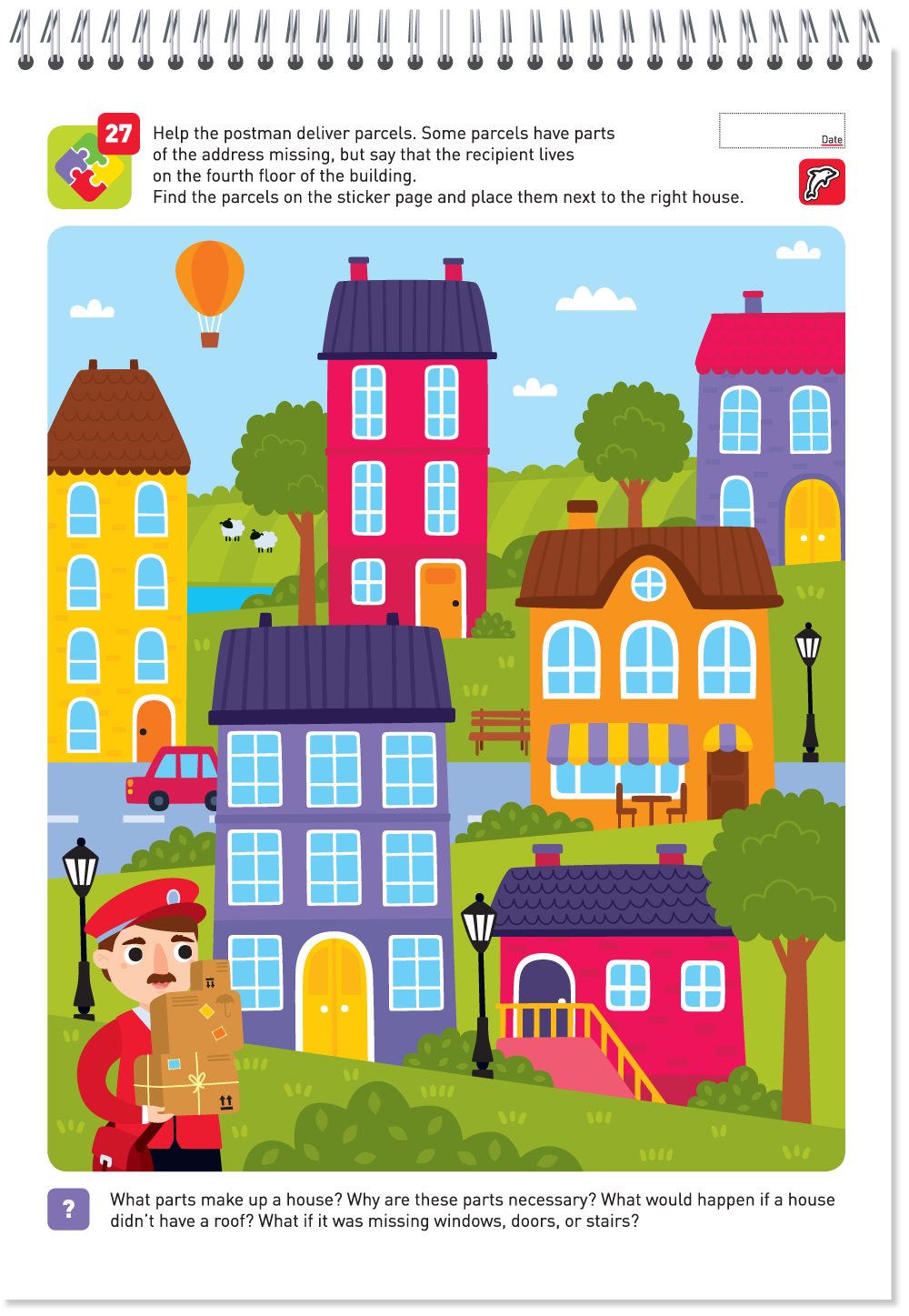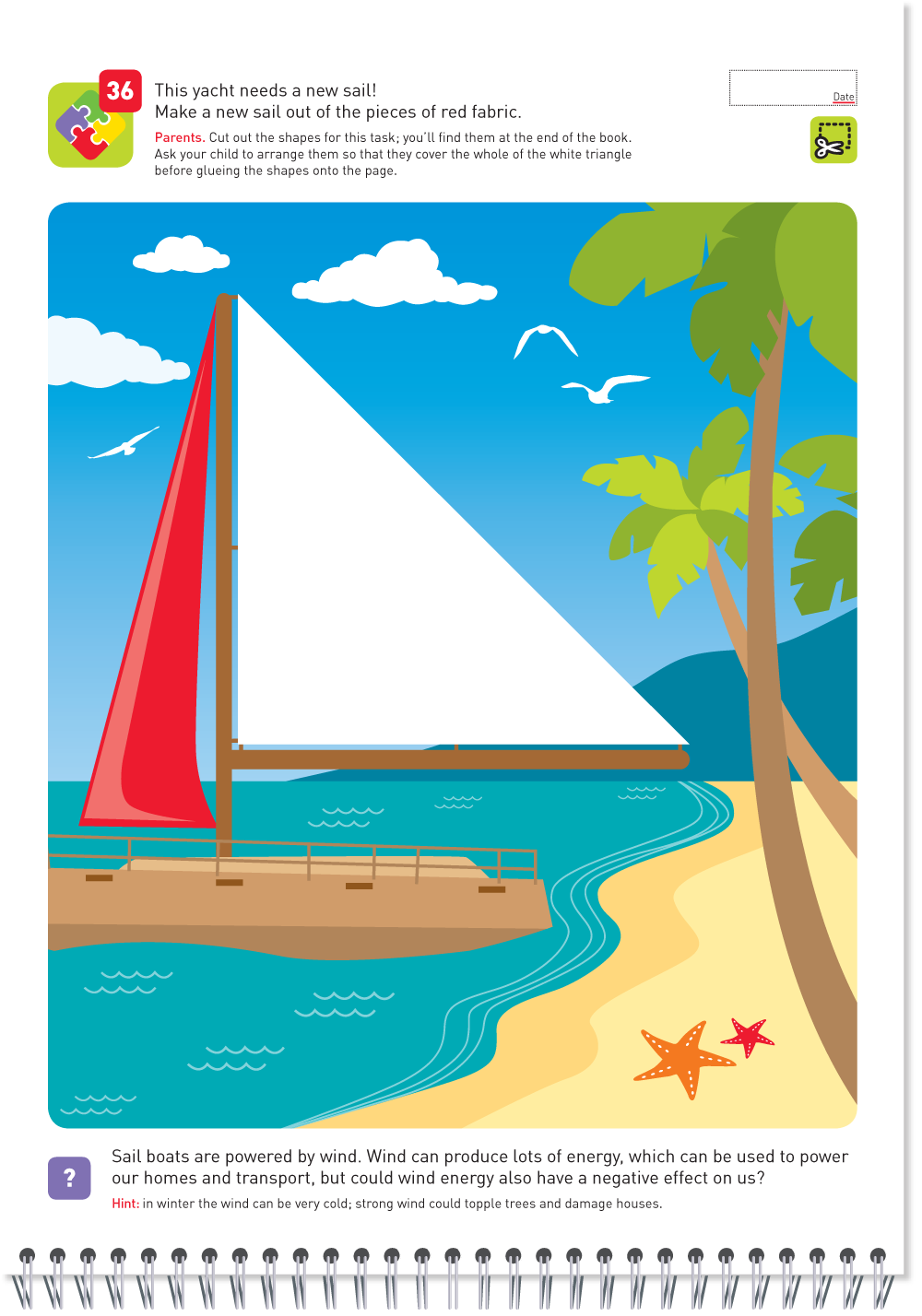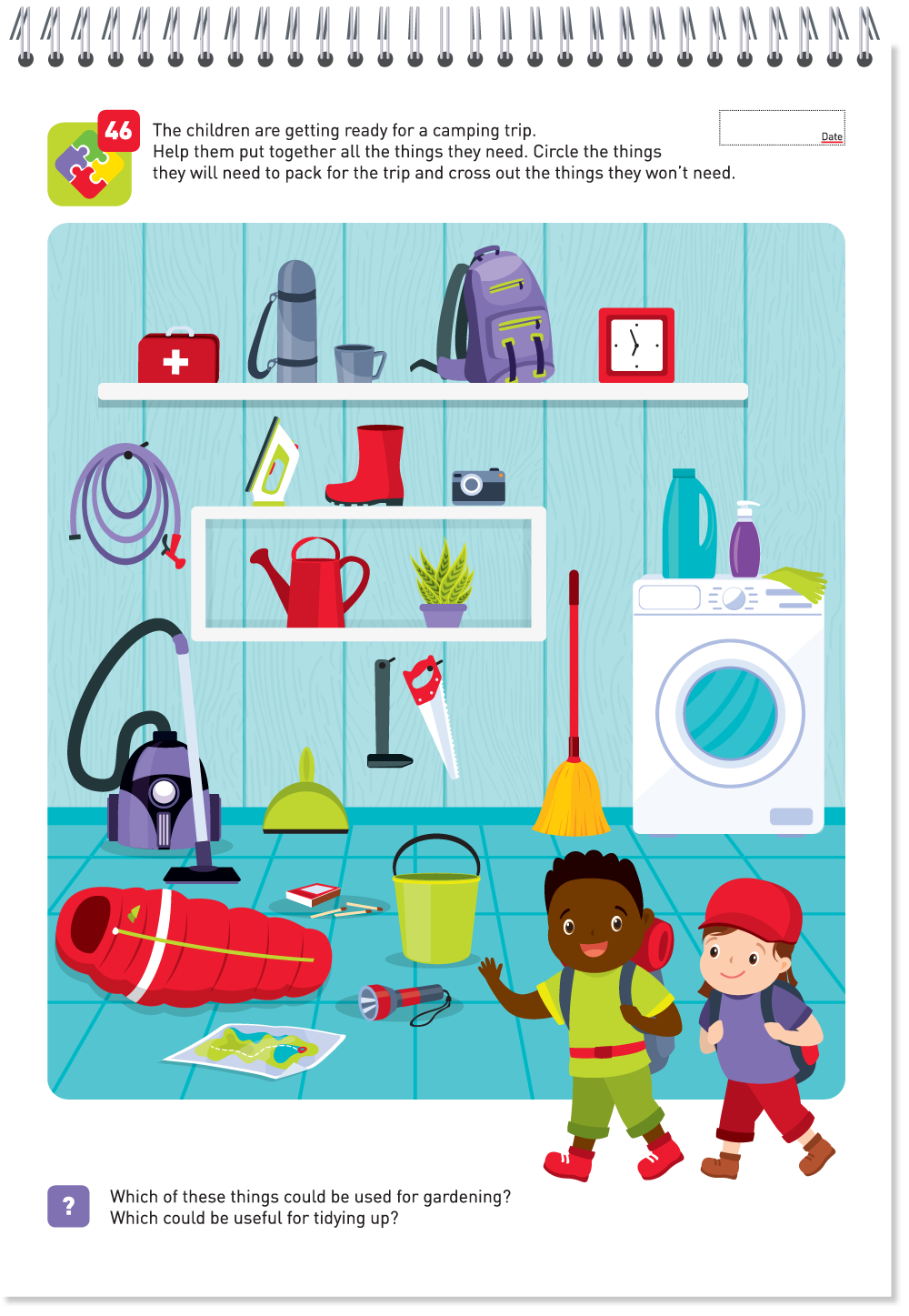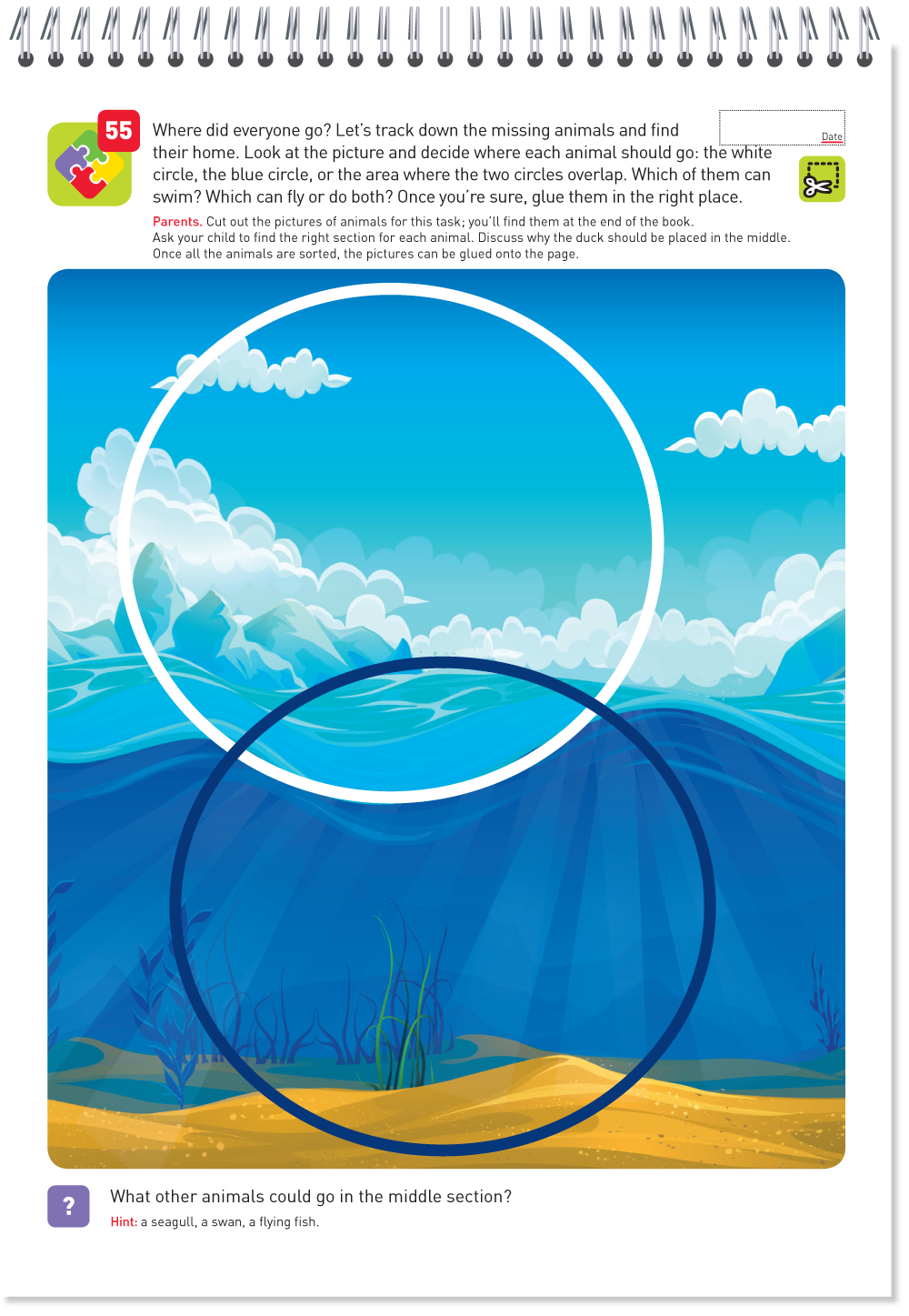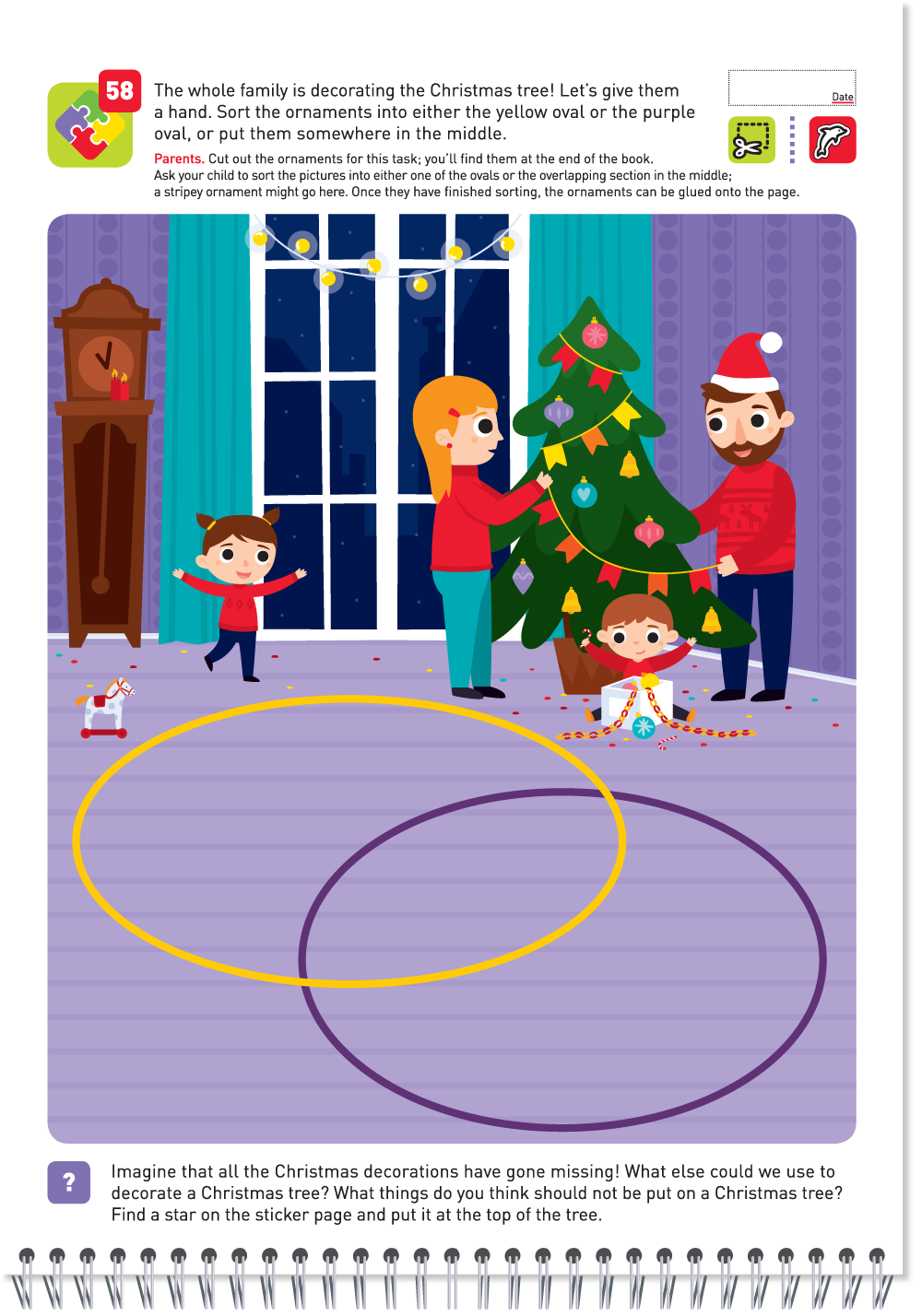I can do it! Problem Solving. Age 3-4
Includes 65 exciting activities for developing problem solving skills:
- develops creative imagination and speech
- teaches your child to solve unique and unusual problems
- demonstrates that the learning process can be fun
- introduces interesting topics for you to talk about with your child
- 49 reusable stickers
- convenient format and open flat spiral binding
This activity book is printed on carefully chosen thick paper, making it easy for children to use.
I can do it! Problem Solving. Age 3-4
- Matte coated paper
- 49 laminated stickers (1 page)
- 80 pages. Size: A4
- Spiral binding
- Weight: 440 g
- Written by Natalya Lyalina, Irina Lyalina
- Illustrated by Evgenia Salikhova, Anastasia Gileva, Marina Naumova, Olga Utchenko
- Translated into English by Evgenia Lazareva, Elena O'Neal
- Edited by Nadia Stulock, Lucinda Hawksley
- Proofread by Manda Waller
About the Activity Book
It's important to us that (with the help of our activity book) your child not only learns to solve problems, but also develops their imagination and their ability to think creatively.
Activity with a storyline
From the age of four, many children are being prepared for school. It is important not to forget that playing games is an essential way for children to develop naturally. Children who play a lot and who play with passion become interesting and successful adults. So let's play! In this book, your child will assemble a submarine, build a Japanese house, feed the animals at the zoo, and much more!
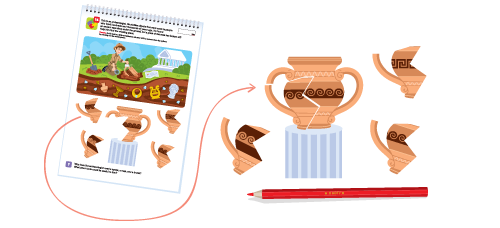
Develop problem solving skills
In this activity book, there are many different tasks, all suitable for children aged 3-4:
-
Comparison. For example, look at the picture of a fish and find it in the aquarium.
-
Serialisation, that is sorting objects by size, height, width, quantity. Who jumped higher?
-
Analysis, that is the allocation of features and properties. For example, find all the toys that are not yellow and not very small.
-
Synthesis. In these tasks, your child will look for missing pieces and will assemble items from their component parts. Help the workers lay new asphalt.
-
Classification, that is the ability to classify objects by a particular feature. For example, think of a name for a shop, based on what it sells.
-
Systematisation. In these tasks your child will make a connection between objects and put them in an order. What came first and what came next?
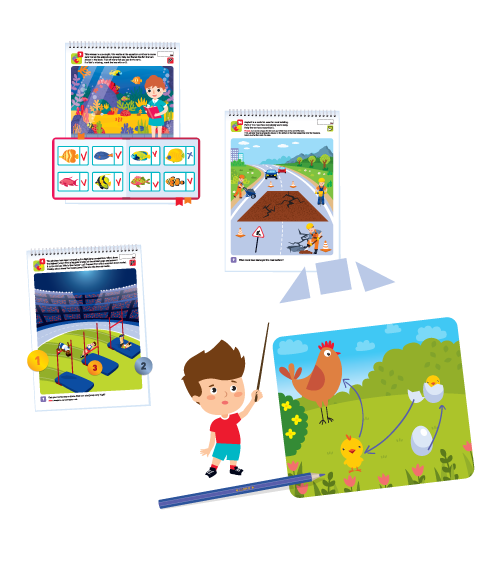
Puzzles
In this activity book, there are many projects where your child will be asked to glue pieces in the right order, such as assembling a submarine from its component parts. This allows your child to try different solutions to the problem. It's also good for developing fine motor skills!
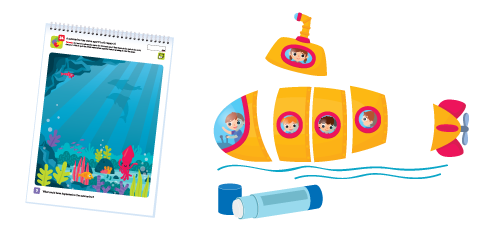
Lots of stickers
Sometimes the stickers are just for fun, but sometimes they will be needed for solving a problem. For example, your child will be asked to place the train cars in the right order.

Interesting topics
We'll visit Japan, sail across the Arctic Ocean and visit a chemistry lab. Learning takes place more quickly when both the child and their grown-up helper are interested and engaged!
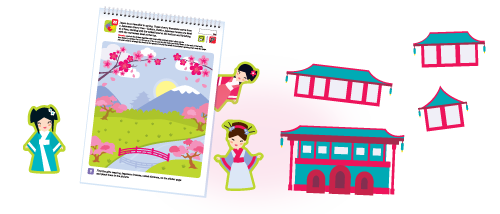
Spiral binding
We have carefully designed the convenient spiral binding so that the book will open flat and will not bend or get in the way of activities. This is especially important for young children.
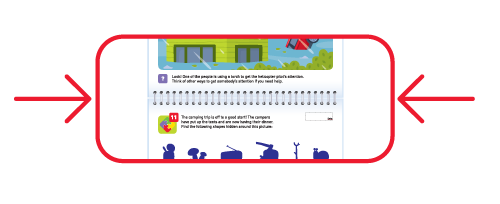
And at the end – a medal!
There are many challenging tasks in this activity book, and when your child gets through them all you can give them a medal from the sticker page to celebrate their efforts!
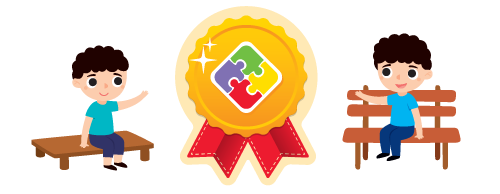
Useful Tips
Develop imagination
At the end of each activity you'll find additional questions, such as: "Think about what you shouldn't put on the dinner table." You can come up with lots of different answers to this type of non-standard question. Be sure to ask your child to justify their point of view. After your child has given their answer (and explained it), discuss other possible solutions together. By doing this, your child will learn to think creatively. If your child is at a loss and can't think of anything at all, offer to brainstorm together. Start talking and the child will join in.
Learn to cut with scissors
If your child already likes to cut with scissors, they can try to do some of the cutting out themselves.
What are other ways to develop problem solving skills?
-
Our series includes the "I can do it! Problem Solving" activity book for children aged 2-3 (soon to be published) and 3-4.
-
You may also be interested in the "I can do it! Memory Games" activity books for children aged 2-3 and 3-4.
